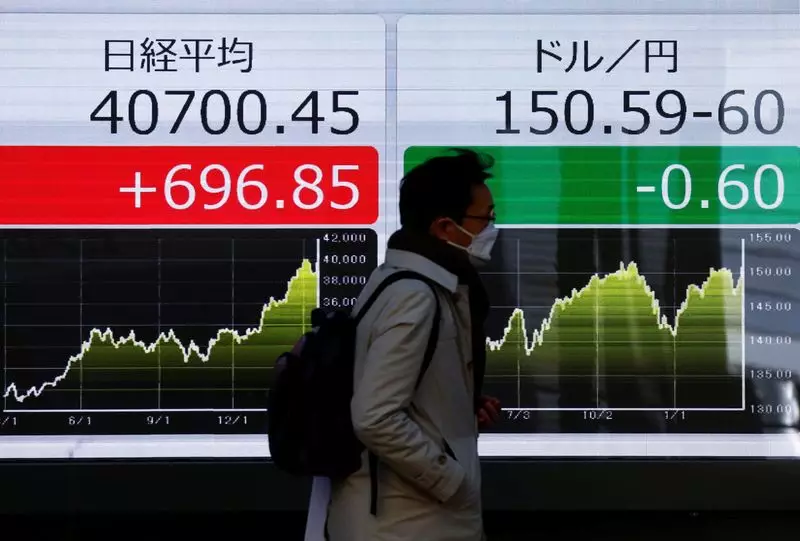The Asian stock market experienced a boost on Wednesday. This was mirrored by a stable performance of the dollar amidst concerns about a potential interest rate cut by the Federal Reserve in September. Despite this positive trend, apprehensions about a slowdown in the U.S. economy limited risk appetite among investors. In Asia, the focus was on the Indian market following a slump in stock prices and the depreciation of the rupee after the announcement of voting results showing a narrower victory margin for Prime Minister Narendra Modi.
A recent report revealed a decrease in U.S. job openings to the lowest level in over three years, indicating a softening in labor market conditions. As a result, the likelihood of interest rate cuts gained momentum, with market expectations leaning towards a 45 basis points easing. The projections for a rate cut in September rose from 46% to 65% over a week, reflecting growing confidence in this monetary policy measure. While this data might not directly impact the upcoming payrolls report, it underscores concerns about the U.S. job market’s weakening trend.
Benchmark 10-year note yields and the dollar index remained stable in Asian trading. However, the U.S. currency showed signs of minor weakness, with FX strategists suggesting an overvaluation of the dollar. Amidst concerns about inflation and economic growth, the dollar’s strength could be mitigated by changing market dynamics and evolving economic conditions. The dollar’s retreat allowed the yen to strengthen to a two-week high, indicating a shift in currency market sentiments.
India’s market scenario was characterized by a sharp decline in the Nifty 50 index, recording its worst session in four years. This decline followed the ruling Bharatiya Janata Party’s loss of parliamentary majority, creating uncertainty about economic policies and investment-led growth initiatives. Foreign investors sold a significant amount of shares, reflecting apprehensions about the political and economic stability in India. Despite short-term market sentiment challenges, long-term economic growth prospects remained optimistic.
Oil prices experienced a slight downturn in early Asian trading due to concerns about declining demand. Reports of increased U.S. crude and fuel stockpiles raised worries about excess supply and weakened market demand. Brent crude futures and U.S. West Texas Intermediate crude futures reflected this downward trend in oil prices. However, gold prices saw a marginal increase, reaching $2,330 per ounce.
The global financial landscape remains complex and interconnected. While Asian markets show signs of resilience and growth, challenges such as labor market fluctuations, currency valuations, political uncertainties, and commodity market trends can influence economic stability. It is essential for investors and policymakers to monitor these developments closely and adapt strategies to navigate the volatile economic environment effectively.

